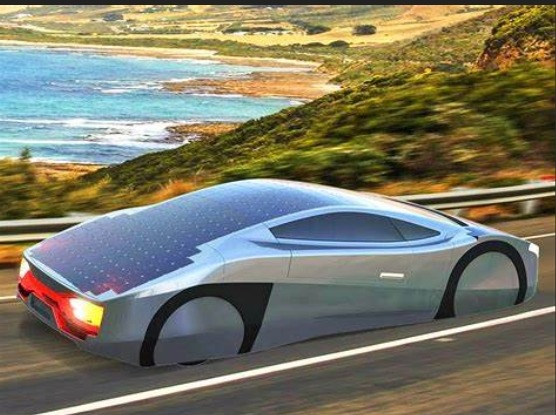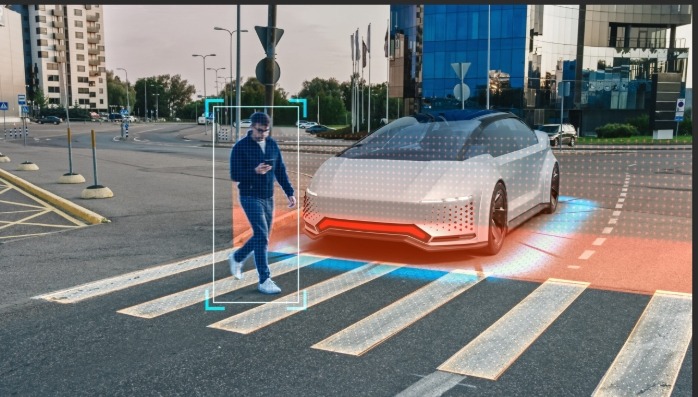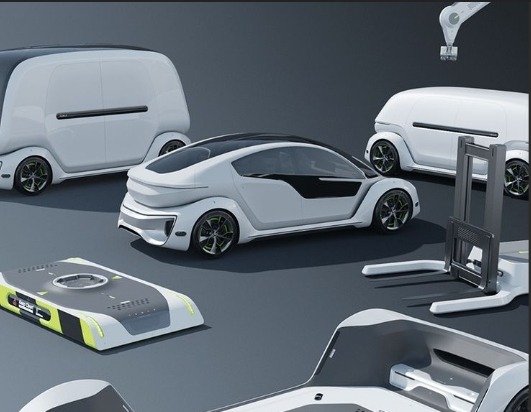Introduction
10 Groundbreaking and Revolutionary Car: The automotive industry is at the forefront of a technological revolution, transforming the way we drive and interact with vehicles. From breakthroughs in artificial intelligence to advanced renewable energy solutions, these innovations are reshaping the sector to meet the demands of a rapidly changing world. As vehicles become smarter and more efficient, they are also playing a pivotal role in reducing environmental impact and creating a more sustainable future.
10 Groundbreaking and Revolutionary Car Modern car innovations are no longer just about aesthetics or performance; they represent a deeper commitment to smarter mobility and eco-conscious living. By embracing cutting-edge technologies like electric vehicles, autonomous systems, and IoT connectivity, automakers are addressing the urgent need for sustainability while enhancing convenience and safety for drivers. These advancements are paving the way for smarter cities and greener transportation ecosystems.
In this blog, we’ll explore 10 groundbreaking car innovations that are driving sustainable and smarter mobility. These advancements are not just technological marvels; they are practical solutions that are shaping the future of driving. From enhancing energy efficiency to improving road safety, these innovations promise to redefine the automotive experience for generations.
1. Electric Cars with Ultra-Fast Charging Systems

Electric cars equipped with ultra-fast charging systems are 10 Groundbreaking and Revolutionary Car the way we power our vehicles, making them a critical innovation in sustainable mobility. These advanced systems are designed to minimize charging times while maximizing convenience, encouraging a broader shift toward eco-friendly transportation.
Technology Overview: Rapid Charging Stations Enabling Full Battery Recharge in Minutes
- High-Powered Chargers: Ultra-fast charging stations utilize direct current (DC) technology with power outputs exceeding 150 kW, drastically reducing charging time compared to traditional chargers.
- Cutting-Edge Battery Technology: Advances in lithium-ion and solid-state batteries are enabling cars to handle rapid energy input without compromising battery health or longevity.
- Smart Charging Systems: Integrated AI monitors battery levels and optimizes the charging process to deliver faster and safer energy replenishment.
Advantages: Reducing Downtime for Drivers and Encouraging Widespread EV Adoption
- Convenience for Drivers: Charging times as low as 15–30 minutes for a full battery provide a user experience that rivals traditional fueling stations.
- Accessibility: The expansion of ultra-fast charging networks along highways and urban centers ensures that drivers can conveniently recharge anywhere.
- Boosting EV Adoption: Shorter charging times alleviate range anxiety and promote electric vehicles 10 Groundbreaking and Revolutionary Car as a practical alternative to gasoline-powered cars.
Eco-Impact: Supporting Cleaner Energy Use and Reducing Dependency on Fossil Fuels
- Renewable Energy Integration: Many ultra-fast chargers are paired with renewable energy sources like solar or wind power, further reducing the carbon footprint of electric vehicles.
- Lower Emissions: By making EVs more accessible and practical, ultra-fast charging systems contribute to a significant reduction in greenhouse gas emissions.
- Energy Efficiency: Advanced charging infrastructure optimizes energy delivery, minimizing wastage and ensuring that EVs remain an eco-conscious choice for transportation.
Ultra-fast charging systems are setting new benchmarks in the electric vehicle industry, combining cutting-edge technology with environmental responsibility. As these charging networks continue to grow, they play a pivotal role in 10 Groundbreaking and Revolutionary Car accelerating the global transition toward cleaner, more sustainable mobility solutions.
यह भी पढ़े: “The Top 5 Innovative Electric Cars Redefining the Automotive Industry”
2. Autonomous Driving Technology

Autonomous driving technology is one of the most transformative 10 Groundbreaking and Revolutionary Carin the automotive industry, leveraging advancements in artificial intelligence (AI) and machine learning to create safer, more efficient transportation systems. This breakthrough represents a significant step toward smarter mobility, with far-reaching implications for urban planning and sustainability.
Current Advancements: Self-Driving Cars Powered by AI and Machine Learning
- AI Integration: Autonomous vehicles (AVs) rely on sophisticated AI algorithms to process data from cameras, sensors, and radar systems, allowing them to make real-time decisions.
- Machine Learning Models: These systems continuously learn from diverse datasets, enabling them to predict and respond to complex traffic scenarios with increasing accuracy.
- Levels of Autonomy: Autonomous driving is classified into five levels, with current advancements focusing on Level 4 (high automation) and the development of fully autonomous Level 5 vehicles.
- Notable Progress: Companies like Tesla, Waymo, and others are leading the charge in deploying self-driving systems for consumer and commercial use, showcasing promising results in pilot projects.
Benefits: Reducing Traffic Accidents, Improving Efficiency, and Transforming Urban Mobility
- Enhanced Safety: By eliminating human errors, which account for the majority of traffic accidents, autonomous technology significantly improves road safety. AVs are programmed to adhere strictly to traffic laws, respond promptly to hazards, and reduce collision risks.
- Optimized Traffic Flow: Self-driving cars communicate with one another and surrounding infrastructure, promoting smoother traffic patterns and reducing congestion.
- Energy Efficiency: Autonomous systems optimize driving behaviors, such as accelerating, braking, and cruising, to maximize fuel or battery efficiency.
- Urban Transformation: With the widespread adoption of AVs, urban spaces can be repurposed as fewer parking lots are required, making way for 10 Groundbreaking and Revolutionary Car green spaces and pedestrian-friendly infrastructure.
Challenges and Future Potential: Addressing Regulations and Public Acceptance
- Regulatory Hurdles: Governments worldwide are grappling with creating standardized rules for AV deployment, data privacy, and liability in case of accidents.
- Public Trust: Many individuals remain skeptical about handing over control to machines. Transparent communication, along with real-world success stories, is essential to building trust in autonomous driving technology.
- Ethical Considerations: Navigating ethical dilemmas, such as decision-making in unavoidable accident scenarios, remains a key challenge for developers.
- Future Vision: As advancements continue, autonomous vehicles are expected to evolve into an integral part of smart cities, seamlessly integrating with public transport systems and IoT networks to deliver a fully connected mobility ecosystem.
Autonomous 10 Groundbreaking and Revolutionary Car driving technology is at the forefront of the journey toward smarter and more sustainable mobility. By addressing current challenges and embracing ongoing advancements, this innovation promises to reshape the way we travel, making roads safer, cities more efficient, and driving more environmentally friendly.
Click Here: 10 Groundbreaking Electric Cars by Arising Tesla Rivals and Auto Start-ups
3. Smart IoT-Enabled Cars

Smart IoT-enabled cars are transforming the automotive landscape by integrating connectivity and intelligence into vehicles. These cars leverage the Internet of Things (IoT) to enhance the driving experience, offering 10 Groundbreaking and Revolutionary Car solutions for convenience, efficiency, and safety. As integral components of smarter mobility ecosystems, they exemplify the future of connected transportation.
Connectivity Features: Integration of Apps, Voice Controls, and Real-Time Data Tracking
- Seamless App Integration: IoT-enabled cars connect with smartphone apps, enabling features such as remote vehicle control, GPS navigation, and personalized infotainment settings.
- Voice-Activated Systems: Advanced voice controls powered by AI allow drivers to interact with their vehicles hands-free, enabling tasks such as adjusting climate settings, making calls, or selecting music.
- Real-Time Data Tracking: Sensors and IoT platforms collect and analyze real-time data on vehicle performance, traffic conditions, and driver behavior, offering 10 Groundbreaking and Revolutionary Car insights for optimal decision-making.
- Cloud Connectivity: IoT cars sync with cloud-based systems to update software automatically, ensuring they remain equipped with the latest technology and security features.
Benefits for Drivers: Enhanced Navigation, Performance Monitoring, and Remote Diagnostics
- Improved Navigation: IoT systems provide real-time traffic updates, predictive route suggestions, and alerts about road conditions, ensuring smoother and more efficient travel.
- Performance Insights: Drivers can access live feedback on fuel efficiency, battery status (for EVs), and vehicle health, empowering them to maintain optimal performance.
- Remote Diagnostics: IoT-enabled cars can identify mechanical issues remotely and send notifications to drivers, suggesting preventive maintenance to avoid breakdowns.
- Safety Enhancements: IoT technologies offer features like geofencing, automatic emergency assistance, and real-time alerts for potential hazards, ensuring a safer driving experience.
Role in Smarter Mobility: Creating Interconnected Ecosystems for Seamless Driving Experiences
- Vehicle-to-Everything (V2X) Communication: IoT-enabled cars communicate with traffic signals, other vehicles, and infrastructure to optimize traffic flow and enhance safety in urban environments.
- Energy Optimization: For electric vehicles, IoT systems monitor 10 Groundbreaking and Revolutionary Car energy usage, suggest nearby charging stations, and enable better energy management during trips.
- Mobility-as-a-Service (MaaS): IoT cars are integral to MaaS platforms, allowing users to book rides, share vehicles, and integrate with public transportation systems for efficient multimodal travel.
- Smart City Integration: Connected cars contribute to the development of smart cities by interacting with IoT-enabled infrastructure to promote eco-friendly and efficient transportation networks.
Smart IoT-enabled cars are not just vehicles—they’re intelligent, connected ecosystems designed to elevate the driving experience while advancing smarter mobility. Their ability to 10 Groundbreaking and Revolutionary Car integrate connectivity, data, and automation positions them as a cornerstone of sustainable and futuristic transportation.
4. Solar-Powered Cars

Solar-powered cars represent a leap forward in 10 Groundbreaking and Revolutionary Car transportation, offering innovative solutions to reduce reliance on non-renewable energy. By integrating solar panels into vehicle designs, these cars harness the sun’s energy for an eco-friendly and self-sufficient driving experience.
Technological Innovation: Vehicles Equipped with Solar Panels for Energy Generation
- Integrated Solar Panels: Solar-powered cars are equipped with photovoltaic cells embedded in their roofs or body panels, converting sunlight into electricity.
- Energy Storage: The solar energy captured is stored in 10 Groundbreaking and Revolutionary Car high-capacity batteries, allowing cars to operate even during cloudy conditions or at night.
- Hybrid Systems: Many solar-powered cars incorporate hybrid technology, where solar energy supplements conventional or electric power systems to improve efficiency.
- On-the-Go Charging: These vehicles provide continuous energy generation while driving or parked, reducing dependency on external charging infrastructure.
Benefits: Reduced Carbon Footprint and Higher Energy Independence for Drivers
- Lower Emissions: By utilizing renewable energy, solar-powered cars significantly reduce greenhouse gas emissions, contributing to cleaner air and a healthier environment.
- Energy Independence: Drivers benefit from decreased reliance on fossil fuels or external power grids, making these vehicles ideal for regions with abundant sunlight.
- Cost Savings: Over time, reduced fuel or electricity costs make solar-10 Groundbreaking and Revolutionary Car powered cars an economical choice for eco-conscious drivers.
- Extended Range: Solar energy provides a supplementary power source, enabling longer trips between refueling or recharging stops.
Sustainability Contribution: Promoting Renewable Energy in the Automotive Sector
- Renewable Energy Integration: Solar-powered cars align with global efforts to promote renewable energy adoption, showcasing its viability in automotive applications.
- Advancing Green Technology: By investing in solar-powered vehicles, automakers inspire innovation and encourage the development of more efficient solar energy systems.
- Increased Awareness: These cars play a vital role in 10 Groundbreaking and Revolutionary Car public awareness about renewable energy’s potential to revolutionize transportation.
- Scalable Impact: As technology advances, solar-powered solutions have the potential to expand into larger-scale transportation systems, such as buses and commercial fleets.
Solar-powered cars symbolize the future of 10 Groundbreaking and Revolutionary Car driving, merging cutting-edge technology with environmental stewardship. Their ability to harness clean, renewable energy ensures a brighter and greener future for the automotive industry and the planet.
5. Hydrogen-Powered Cars

Hydrogen-powered cars are an 10 Groundbreaking and Revolutionary Car solution for clean energy mobility, offering a zero-emission alternative that complements electric vehicles (EVs). By utilizing hydrogen fuel cells, these vehicles deliver efficient and sustainable driving experiences, positioning themselves as an important part of the future of transportation.
Overview of Hydrogen Technology: Vehicles Utilizing Hydrogen Fuel Cells for Clean Energy
- How it Works: Hydrogen-powered cars use fuel cells that convert hydrogen gas into electricity through a chemical process involving oxygen. This generates power for the electric motor while emitting only water vapor as a byproduct.
- Fuel Cell Efficiency: Modern hydrogen fuel cell technology ensures high energy efficiency, enabling cars to deliver similar or superior performance compared to conventional internal combustion engines.
- Renewable Hydrogen: Hydrogen can be produced from renewable sources such as wind, solar, or hydroelectric power, further 10 Groundbreaking and Revolutionary Car the carbon footprint of these vehicles.
Advantages: Zero-Emission Driving with Quick Refueling Times Compared to EVs
- Zero Emissions: Unlike gasoline-powered cars, hydrogen-powered vehicles produce no pollutants, contributing to cleaner air and reduced environmental impact.
- Fast Refueling: Hydrogen refueling stations allow cars to be refueled in just 3–5 minutes, a significant advantage over the longer charging times of EVs.
- Extended Range: Hydrogen cars often have greater driving ranges than many battery-electric vehicles, making them ideal for long-distance travel.
- Quiet and Smooth Operation: The electric motors powered by hydrogen fuel cells deliver a silent and seamless driving experience.
Future Prospects: Expanding Hydrogen Infrastructure to Encourage Adoption
- Infrastructure Development: Scaling up hydrogen refueling networks is critical for broader adoption. Governments and private sectors are investing in the 10 Groundbreaking and Revolutionary Car expansion of hydrogen stations globally.
- Cost Reduction: Advancements in hydrogen production and storage technology are expected to lower costs, making hydrogen-powered cars more accessible to consumers.
- Commercial Applications: Hydrogen-powered vehicles are increasingly being explored for commercial use, including buses, trucks, and trains, to support sustainable transportation on a larger scale.
- Global Adoption: Countries like Japan, South Korea, and Germany are leading efforts to establish hydrogen as a mainstream energy source, driving innovation and public awareness.
Hydrogen-powered cars offer a promising path toward achieving cleaner and more efficient transportation systems. Their ability to deliver zero emissions, quick refueling, and extended driving range makes them a key contender in the journey toward greener mobility.
6. Advanced Safety Features with AI

AI-driven advanced safety features are 10 Groundbreaking and Revolutionary Car the automotive industry, making vehicles smarter and safer than ever. These innovations are part of the movement toward smarter mobility, addressing road safety with precision and efficiency. By leveraging artificial intelligence, cars are now equipped with intelligent systems that predict,10 Groundbreaking and Revolutionary Car prevent, and respond to potential hazards in real time.
- Revolutionary Systems: Collision Avoidance, Automatic Braking, and Adaptive Headlights
Collision Avoidance Systems: These systems use AI algorithms combined with sensors, cameras, and radar to detect obstacles, pedestrians, or other vehicles. The car can alert the driver or automatically steer to avoid collisions.
- Automatic Emergency Braking (AEB): Powered by AI, AEB systems monitor the road and apply brakes autonomously if the driver fails to respond in time, reducing the likelihood of accidents.
- Adaptive Headlights: AI enables headlights that adjust their beam 10 Groundbreaking and Revolutionary Car angles based on the car’s speed, road conditions, and oncoming traffic, ensuring better visibility without blinding other drivers.
- Lane-Keeping Assistance: AI-powered lane detection ensures that vehicles stay in their designated lanes, gently correcting steering when required.
- Impact on Driver Confidence: Ensuring Safer and More Secure Driving Experiences
- Peace of Mind: With AI monitoring critical driving parameters, drivers feel more secure knowing their vehicles are equipped to handle unexpected situations effectively.
- Reduced Human Error: The majority of road accidents are caused by human error. AI safety features act as an additional layer of vigilance, significantly lowering the risk of mistakes.
- Enhanced Road Awareness: These systems provide real-time alerts and feedback, improving driver awareness and overall responsiveness to road conditions.
- Support for Inexperienced Drivers: For new or less-confident drivers, AI-driven safety features act as a guiding hand, boosting confidence and safety on the road.
Integration with Smarter Mobility: Using AI to Enhance Road Awareness and Reduce Accidents
- Vehicle-to-Vehicle (V2V) Communication: AI enables 10 Groundbreaking and Revolutionary Car to communicate with one another, sharing real-time data about traffic flow, potential hazards, and accident risks to promote coordinated driving.
- Smart City Interaction: Cars with AI safety features can interact with smart traffic lights and road infrastructure, optimizing traffic flow and reducing congestion.
- Accident Reduction: Advanced safety systems driven by AI significantly reduce the likelihood of collisions, contributing to safer roads and fewer traffic-related injuries or fatalities.
- Foundation for Autonomous Driving: These AI features act as building blocks for fully autonomous vehicles, integrating seamlessly into smarter mobility ecosystems for future transportation solutions.
AI-powered safety features are an essential component of 10 Groundbreaking and Revolutionary Car and smarter mobility, ensuring safer journeys for drivers and passengers. By reducing accidents and enhancing road awareness, they pave the way for intelligent and efficient transportation systems that benefit everyone on the road.
7. Modular Car Designs

Modular car designs are reshaping the automotive industry by offering flexibility, cost-effectiveness, and sustainability. These innovative designs enable vehicles to be customized, upgraded, and maintained efficiently while 10 Groundbreaking and Revolutionary Car reducing environmental impact.
Flexibility in Design: Cars with Interchangeable Components for Upgrades and Personalization
- Customizable Features: Modular designs allow drivers to interchange car components, such as seats, dashboards, or tech systems, according to their preferences and needs.
- Scalable Options: Owners can upgrade key parts, like battery modules for EVs or infotainment systems, without replacing the entire vehicle.
- Adaptive Design: Modular cars can adapt to different use cases, from family cars to cargo vehicles, enhancing versatility for individual or commercial purposes.
- Personalized Experience: These designs empower users to tailor their cars to reflect their style, creating unique configurations for every driver.
Cost-Effectiveness: Reduced Waste and Lower Costs Through Modular Production
- Efficient Manufacturing: Automakers produce standardized modules, lowering production costs while maintaining quality and consistency.
- Reduced Repair Costs: Modular components simplify 10 Groundbreaking and Revolutionary Car vehicle repairs, as parts can be swapped out easily without extensive labor or resources.
- Long-Term Savings: Modular cars enable owners to extend their vehicle’s lifespan by upgrading specific components instead of purchasing new cars, offering significant cost benefits.
- Economic Accessibility: Modular production makes cars more affordable for a broader audience, democratizing access to advanced automotive technology.
Sustainability Impact: Encouraging Reusability and Reducing Manufacturing Waste
- Reduced Resource Consumption: Modular designs promote the reuse of existing car parts, minimizing the demand for new materials.
- Lower Carbon Emissions: By reducing waste and maximizing component efficiency, modular production contributes to a cleaner manufacturing process.
- Circular Economy Approach: Modular cars align with circular 10 Groundbreaking and Revolutionary Car economy principles, encouraging recycling and repurposing of components for extended use.
- Environmental Awareness: The popularity of modular vehicles drives innovation in sustainable automotive solutions, inspiring both manufacturers and consumers to prioritize eco-friendly practices.
Modular car designs are a shining example of how 10 Groundbreaking and Revolutionary Car and smarter mobility can coexist. Their ability to combine personalization, cost-effectiveness, and environmental responsibility ensures they are at the forefront of innovation in the automotive industry, paving the way for a more flexible and eco-conscious future.
8. Green Materials in Car Manufacturing

The automotive industry is embracing green materials in manufacturing as part of a global effort to reduce environmental impact and promote 10 Groundbreaking and Revolutionary Car. By integrating eco-friendly innovations such as recycled plastics, biodegradable substances, and plant-based fibers, automakers are transforming production processes for a greener future.
Eco-Friendly Innovations: Use of Recycled Plastics, Biodegradable Materials, and Plant-Based Fibers
- Recycled Plastics: Automakers are repurposing plastic waste into durable car components such as dashboards, seat fabrics, and exterior panels. For example, plastic bottles and ocean waste are being transformed into high-quality materials, significantly reducing landfill 10 Groundbreaking and Revolutionary Car accumulation.
- Biodegradable Materials: Components made from organic materials such as natural rubber, cork, and biodegradable composites are designed to break down at the end of their lifecycle, minimizing waste and pollution.
- Plant-Based Fibers: Renewable fibers like hemp, flax, and jute are being utilized in interior design and structural components, providing a lightweight yet strong 10 Groundbreaking and Revolutionary Car alternative to synthetic materials. Additionally, innovations in using plant-based resins and adhesives further enhance sustainability.
Advantages: Lowering the Environmental Impact of Production Processes
- Reduced Carbon Footprint: By using renewable and recycled materials, car manufacturers significantly cut greenhouse gas emissions during production. For example, using recycled aluminum and steel reduces energy consumption compared to sourcing virgin materials.
- Waste Reduction: Incorporating recycled and biodegradable materials decreases the amount of waste sent to landfills and oceans. These practices align with circular economy principles, promoting resource reuse and conservation.
- Energy Efficiency: The production of green materials often requires less energy, reducing the environmental cost of manufacturing.
- Consumer Appeal: Green materials resonate with eco-conscious consumers, creating a competitive advantage for automakers committed to sustainability.
Future Scope: Adopting Sustainable Materials for Mass Manufacturing in the Automotive Industry
- Scaling Innovations: As technology advances, 10 Groundbreaking and Revolutionary Car green materials are becoming more cost-effective and accessible, paving the way for large-scale adoption in mass manufacturing.
- Strategic Partnerships: Collaborations between automakers, material scientists, and recycling companies are fostering innovation and expanding the availability of sustainable resources.
- Legislation and Standards: Governments and regulatory bodies are introducing policies to encourage or mandate the use of sustainable materials, accelerating the shift toward greener automotive production.
- Next-Generation Materials: Research into bio-engineered materials, such as lab-grown leather or algae-based plastics, holds immense potential for further reducing the automotive industry’s ecological impact.
Green materials in car manufacturing are redefining the industry’s approach to 10 Groundbreaking and Revolutionary Car. By prioritizing eco-friendly innovations, lowering environmental impact, and scaling these practices for mass production, automakers are driving the future of transportation toward a more sustainable and responsible direction.
Conclusion
The automotive industry stands at the crossroads of transformation, powered by technological advancements and a growing commitment to 10 Groundbreaking and Revolutionary Car. These 10 groundbreaking car innovations—ranging from ultra-fast charging systems and autonomous driving technology to modular designs and green manufacturing materials—are reshaping the way we view and experience mobility. Together, they are not only redefining automotive excellence but also addressing 10 Groundbreaking and Revolutionary Car critical environmental and societal challenges.
The dual impact of these innovations cannot be overstated. On one hand, they are driving sustainability by reducing emissions, conserving resources, and promoting renewable energy use. On the other hand, they are advancing smarter mobility through connected ecosystems, energy-efficient designs, and cutting-edge technologies, making driving safer, more efficient, and tailored to modern needs.
Now is the time to embrace this exciting wave of change. Explore these innovations, support sustainable solutions, and contribute to the journey toward a greener and smarter future in transportation. Whether through adopting eco-conscious driving habits or staying informed about the latest 10 Groundbreaking and Revolutionary Car, every step you take makes a difference. Let’s drive into the future responsibly—one innovation at a time.

